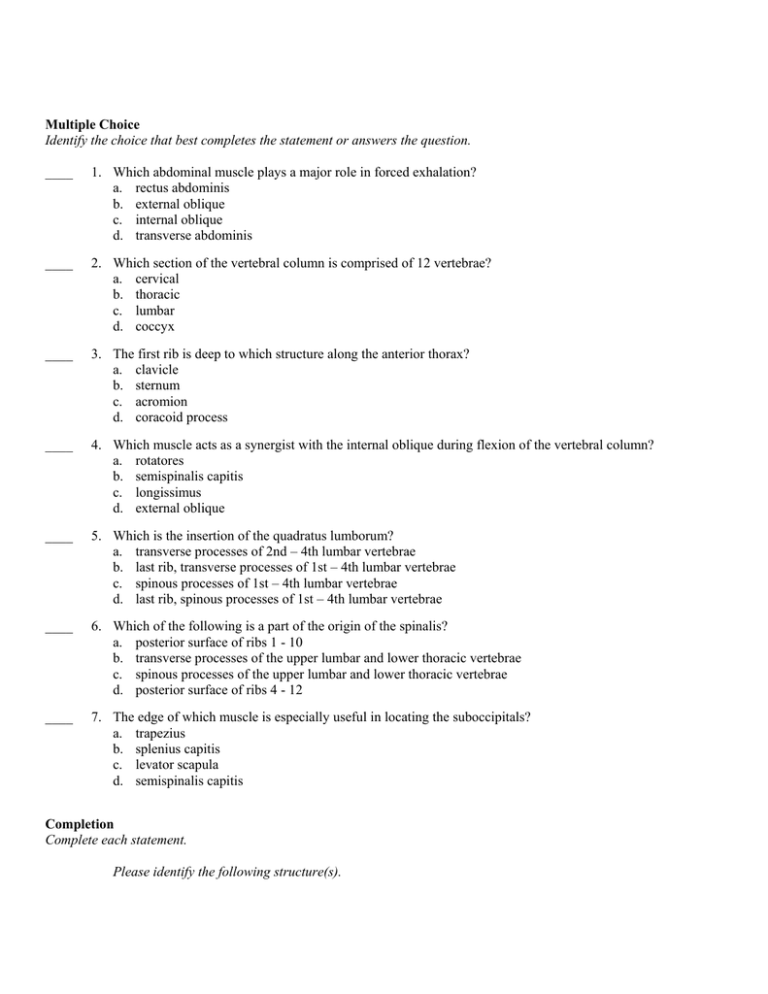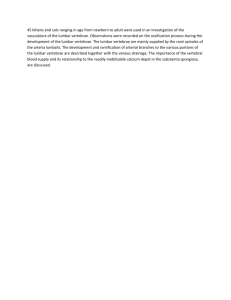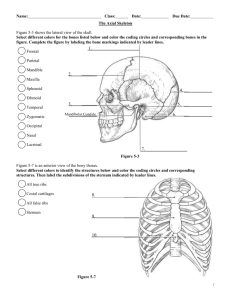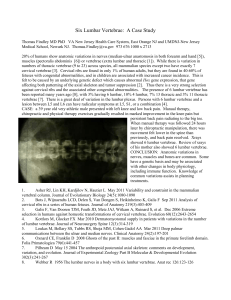Multiple Choice Identify the choice that best completes
advertisement

Multiple Choice Identify the choice that best completes the statement or answers the question. ____ 1. Which abdominal muscle plays a major role in forced exhalation? a. rectus abdominis b. external oblique c. internal oblique d. transverse abdominis ____ 2. Which section of the vertebral column is comprised of 12 vertebrae? a. cervical b. thoracic c. lumbar d. coccyx ____ 3. The first rib is deep to which structure along the anterior thorax? a. clavicle b. sternum c. acromion d. coracoid process ____ 4. Which muscle acts as a synergist with the internal oblique during flexion of the vertebral column? a. rotatores b. semispinalis capitis c. longissimus d. external oblique ____ 5. Which is the insertion of the quadratus lumborum? a. transverse processes of 2nd – 4th lumbar vertebrae b. last rib, transverse processes of 1st – 4th lumbar vertebrae c. spinous processes of 1st – 4th lumbar vertebrae d. last rib, spinous processes of 1st – 4th lumbar vertebrae ____ 6. Which of the following is a part of the origin of the spinalis? a. posterior surface of ribs 1 - 10 b. transverse processes of the upper lumbar and lower thoracic vertebrae c. spinous processes of the upper lumbar and lower thoracic vertebrae d. posterior surface of ribs 4 - 12 ____ 7. The edge of which muscle is especially useful in locating the suboccipitals? a. trapezius b. splenius capitis c. levator scapula d. semispinalis capitis Completion Complete each statement. Please identify the following structure(s). 1. A 2. B Please identify the following structure(s). 3. A 4. B 5. C 6. D 7. E 8. Passive rotation of the spine to the opposite side would ____________________ the rotatores. 9. Passive lateral flexion of the head would ____________________ the splenius cervicis. 10. Passive rotation of the vertebral column to the same side would ____________________ the external oblique. Please identify the following structure(s). 11. A 12. B 13. C 14. D 15. E 16. F 17. G




